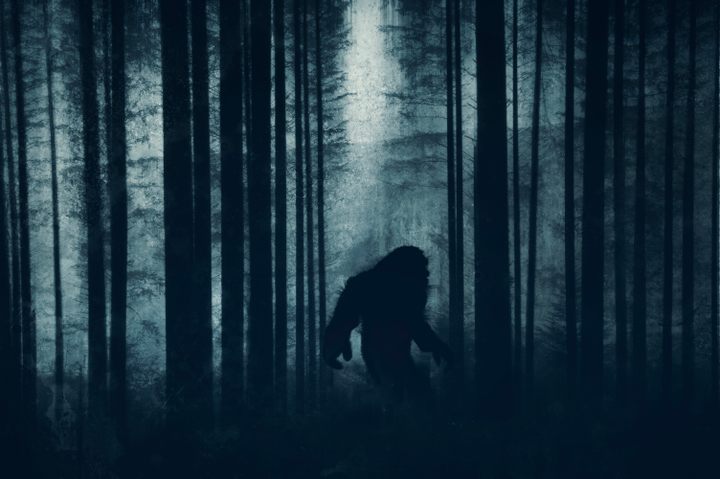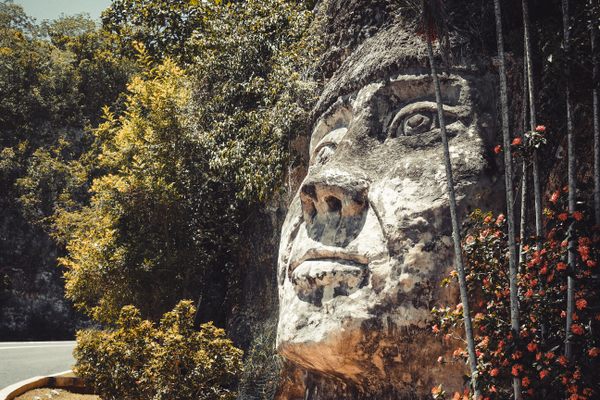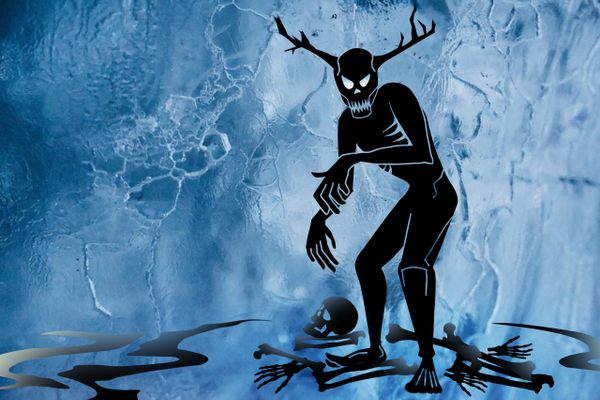
10 Places to Visit If You Want to Believe in Bigfoot
Even if you’re not convinced cryptids exist, these spots will offer a fascinating look into the minds of those who are.
Monsters have always been a source of fascination. We hear tales of Loch Ness, the yeti, and America’s favorite cryptid, Bigfoot and get excited. While some people think of these as interesting myths, others have committed their lives to studying the potentially-maybe-not-really-real monsters. If you’re a believer, you’ll want to add the following places to your next itinerary. And even if you’re not, these curious destinations offer a fun glimpse into a common obsession.

Sasquatch Outpost, Colorado
Jim Myers originally opened the Sasquatch Outpost in 2014 as a grocery store. However, after talking with locals about Bigfoot sightings in the area, he decided to convert it. Today, it’s a museum dedicated to the legendary cryptid. Inside the magical, forest-like interior, visitors can find maps, patches, and even socks honoring the alleged creature.
Monster and Stone Museum, Japan
Hidden in the Iya Valley, this roadside attraction brings together folk monsters and the region’s unique geography. The Yokai Yashiki, or Monster and Stone Museum, tells the history of the many monsters, demons, and spirits that inhabit the region. Yokai are unique to Japanese folklore, and the museum is filled to the brim with them. Papier-mâché representations and artifacts line the walls, along with maps showing where in the remote surrounding landscape these spirits have been spotted.
Mr. Yakkerboo and Blue, Australia
Mr. Yakkerboo is a mythical bunyip creature who has become something of a local legend in this suburb of Melbourne. His name is derived from yakkerboo, a word of Aboriginal origin meaning “greener pastures.” An eye-catching and somewhat unusual sculpture of the cryptid was erected on the main street of Pakenham, Victoria, in April 2017, where he’s joined by an Australian cattle dog named Blue.

Icelandic Sea Monster Museum, Iceland
Tales of monstrous sea beasts have been blowing in from the cold seas off the shores of Iceland for centuries, and a small fjord town that still reports regular sightings has established a museum dedicated to them. The museum delves into the lore of Iceland’s sea monsters using the oral histories of those who have encountered them. Get lost in the exhibit’s atmosphere of eerie mystery, videos, and an interactive table where amateur monster hunters can explore a map of Iceland’s coast.
Lake Tele, Republic of the Congo
Located in one of the least explored areas in the world, Lake Tele is rumored to be home to the Mokèlé-mbèmbé, a brontosaurus-like creature that is the Congo’s answer to the Loch Ness Monster. For hundreds of years, reports of a mysterious cryptid resembling a long-necked dinosaur have trickled out of the area, having briefly been spotted by explorers or described by the local tribal people.
Ape Canyon, Washington
Ape Canyon is a narrowing gorge just southeast of Mount St. Helens. One of the most famous Bigfoot attacks in the cryptozoological canon is said to have taken place there in 1924. A group of miners staying in a cabin claimed they were assailed by a gang of wild, stone-throwing “apemen.” Luckily, everyone survived to tell the tale and give the canyon its name.

Bariloche, Argentina
Deep in the mountains of Patagonia is a glistening, crystal-clear lake. People go there from all over the world to bask in the cool waters while gazing out at the stunning Argentinian landscape. But humans aren’t the only ones who swim in Nahuel Huapi Lake, according to legend. A long-necked, plesiosaur-like monster named Nahuelito roams these waters, the story goes. The now-famous Argentinian cryptid has been spotted countless times from this lake in San Carlos de Bariloche—by the Indigenous Tehuelche people, 16th-century sailors, 19th-century immigrants, and modern documentary filmmakers.
International Cryptozoology Museum, Maine
The world’s only international cryptozoology museum is host to an unrivaled collection of mysterious objects. Owner Loren Coleman has amassed an assortment of specimens, replicas, and artifacts relating to famous and lesser-known cryptids, including the eight-and-a-half-foot tall and 300-pound “Crookston Bigfoot,” a life-size coelacanth (a real fish, once thought to be extinct), a replica of P.T. Barnum’s “Feejee Mermaid,” and much more. The exhibits also include cryptid hair samples, photographs, footprint casts, and fecal material.

Bigfoot Crossroads of America, Nebraska
This Nebraska museum is the brainchild of Harriet McFeely (the Bigfoot Lady), a local resident who has spent her life following the trail of the legendary cryptid. McFeely has traveled the world collecting stories and ephemera from Bigfoot-enthusiast communities all over. Her collection includes 2,000-year-old skulls, hand and foot castings, and a photo of “Patty,” a Bigfoot captured on film in 1967.
International Mountain Museum, Nepal
Opened in 2004, this museum has a focus on Nepali mountains and the Himalayas, with a wing dedicated to Edmund Hillary and Tenzing Norgay, who first summited Everest in 1953. There is also an exhibition about the legend of the yeti, including beliefs and facts about the creature also called the abominable snowman—which they recognize is probably a Tibetan brown bear.












Follow us on Twitter to get the latest on the world's hidden wonders.
Like us on Facebook to get the latest on the world's hidden wonders.
Follow us on Twitter Like us on Facebook